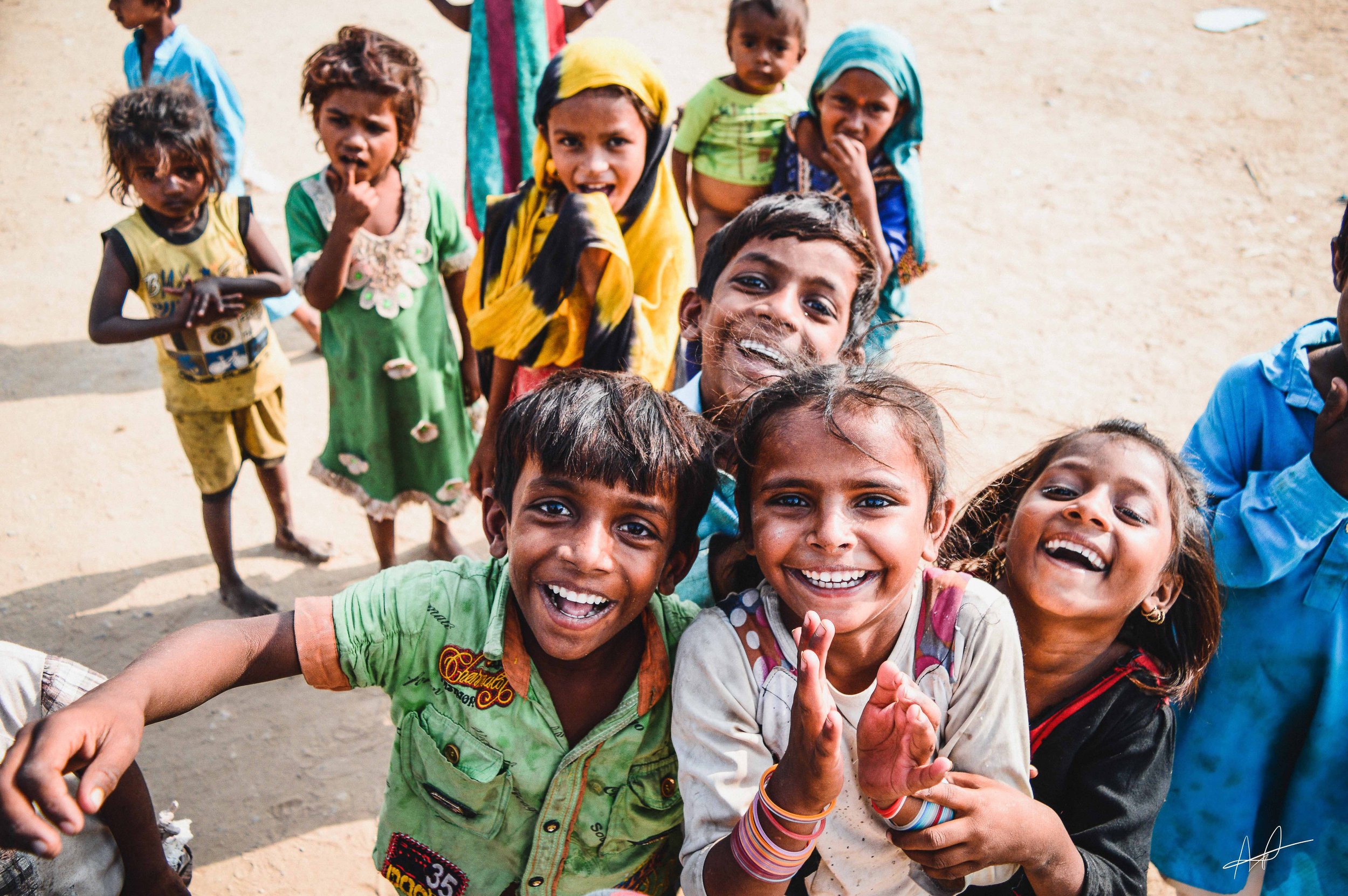Your eyes are your perspective.
I remember this exact photo early 2017.
We were out in a small, overlooked neighborhood near Safoora, Karachi. Distributing food. Capturing media. Serving, documenting, moving quickly.
It was during my time at Meal Donate, a nonprofit I helped run that focused on finding communities on the edge—places that didn’t show up on maps, or NGO radars, or news cameras. Places where people were in need but too dignified to say it. You see, that’s the thing about true poverty: it often hides in silence.
Our team had one mission—find those places. Serve those people. Show their reality, but without stripping their dignity.
And in this moment, I was photographing one child who had just received a meal. He couldn’t stop smiling.
Then another child came into the frame. And another.
Within moments, I was surrounded—seven children jumping, laughing, grinning with joy, not because they were finally seen as “needy,” but because, for a split second, they were just seen as kids.
I was tearing up behind the lens—but I had to keep it inside. On the field, we’re trained not to show too much emotion. It helps prevent attachment. Keeps us focused on the mission. But deep down, that image carved something permanent into me.
It reminded me:
True happiness isn’t about how much you have. It’s about what you do with what you have.
Photography Isn’t Just Framing. It’s Witnessing
I’ve always said photography, to me, isn’t about nailing settings. It’s about enabling stories.
That moment with those kids? It wasn’t just about documenting poverty. It was about interrupting the narrative—offering a frame where joy could exist despite the odds. Where they weren’t statistics, but stories. Not objects of pity—but reflections of resilience.
Sometimes, I go back and look at that photo. The original context fades, and I see it with fresh eyes—like someone who wasn’t there. And in doing so, I re-learn what I captured. I re-feel the “why” behind it. It’s one of those rare moments where your own art speaks back to you.
Silence Isn’t Always Absence
There’s something else I’ve learned: Silence doesn’t always mean absence.
Sometimes, it’s the loudest thing in the room.
In our world—where posts, opinions, and punchlines are currency—silence makes people uncomfortable. We rush to interpret it. Dismiss it.
But I’ve seen this go wrong—especially in relationships.
I once mistook someone’s silence for emotional absence. It felt like they had nothing to say, like they had shut down.
The truth?
They were carrying a lifetime of thoughts inside. They just didn’t know how—or when—to release it.
That changed how I view people.
It changed how I view stillness.
Even in photography, some of the quietest images—the ones with no action, no subject, no chaos—carry the most meaning.
They’re still. But they’re full.
What If No One Cares What You See?
Some people ask, “But what if no one cares about how I see the world?”
I think about that a lot.
I’ve wrestled with it.
I still do.
But what I’ve come to believe is this:
Even if no one else sees it, your Lord does.
And if the Creator of all things sees value in how you witness the world—that’s not nothing.
But more than that… do you value it?
Do you respect your perspective enough to share it—even if no one claps?
Because your eye is your story.
And even if the world doesn’t validate it in time—or ever—your witnessing still matters.
A Gentle Reminder
So yeah, this post isn’t that deep.
It’s a soft reminder. A frame inside a frame.
Keep observing.
Keep noticing.
Keep sharing.
Because the world doesn’t need more noise.
It needs more honest perspectives—especially from people who take the time to really see.
